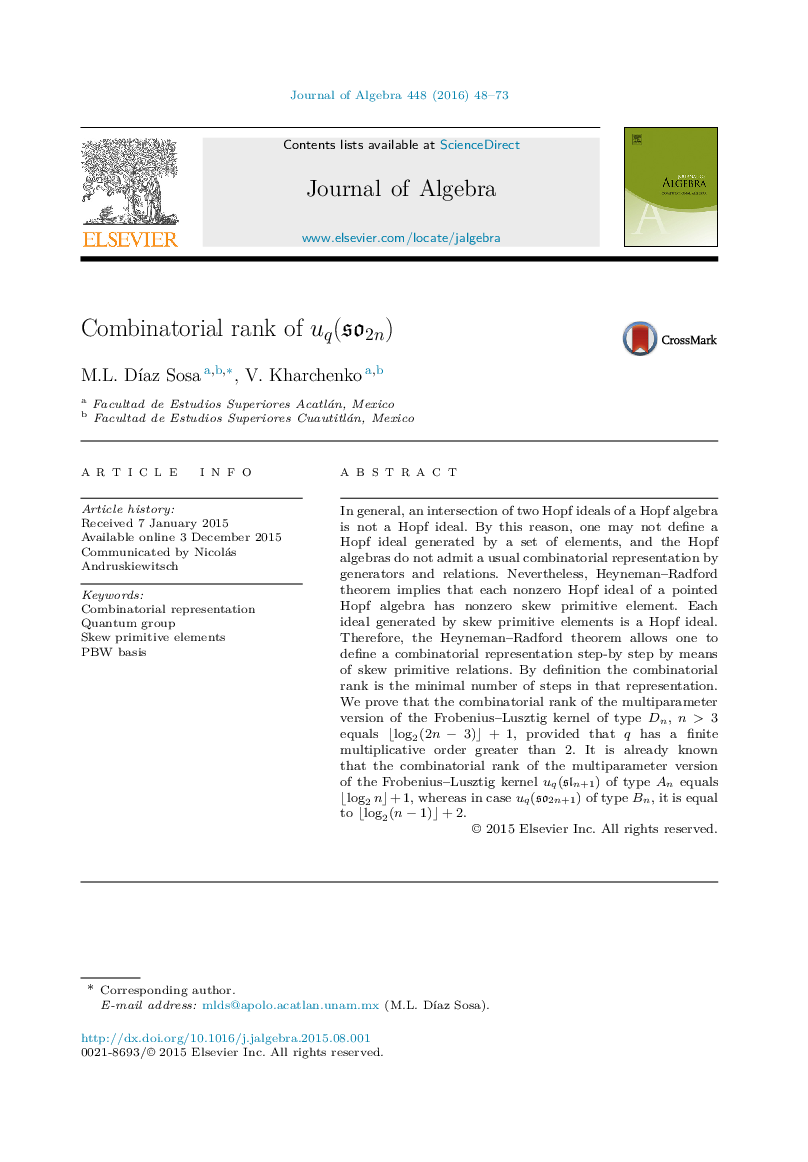| Article ID | Journal | Published Year | Pages | File Type |
|---|---|---|---|---|
| 4583972 | Journal of Algebra | 2016 | 26 Pages |
In general, an intersection of two Hopf ideals of a Hopf algebra is not a Hopf ideal. By this reason, one may not define a Hopf ideal generated by a set of elements, and the Hopf algebras do not admit a usual combinatorial representation by generators and relations. Nevertheless, Heyneman–Radford theorem implies that each nonzero Hopf ideal of a pointed Hopf algebra has nonzero skew primitive element. Each ideal generated by skew primitive elements is a Hopf ideal. Therefore, the Heyneman–Radford theorem allows one to define a combinatorial representation step-by step by means of skew primitive relations. By definition the combinatorial rank is the minimal number of steps in that representation. We prove that the combinatorial rank of the multiparameter version of the Frobenius–Lusztig kernel of type DnDn, n>3n>3 equals ⌊log2(2n−3)⌋+1⌊log2(2n−3)⌋+1, provided that q has a finite multiplicative order greater than 2. It is already known that the combinatorial rank of the multiparameter version of the Frobenius–Lusztig kernel uq(sln+1)uq(sln+1) of type AnAn equals ⌊log2n⌋+1⌊log2n⌋+1, whereas in case uq(so2n+1)uq(so2n+1) of type BnBn, it is equal to ⌊log2(n−1)⌋+2⌊log2(n−1)⌋+2.
